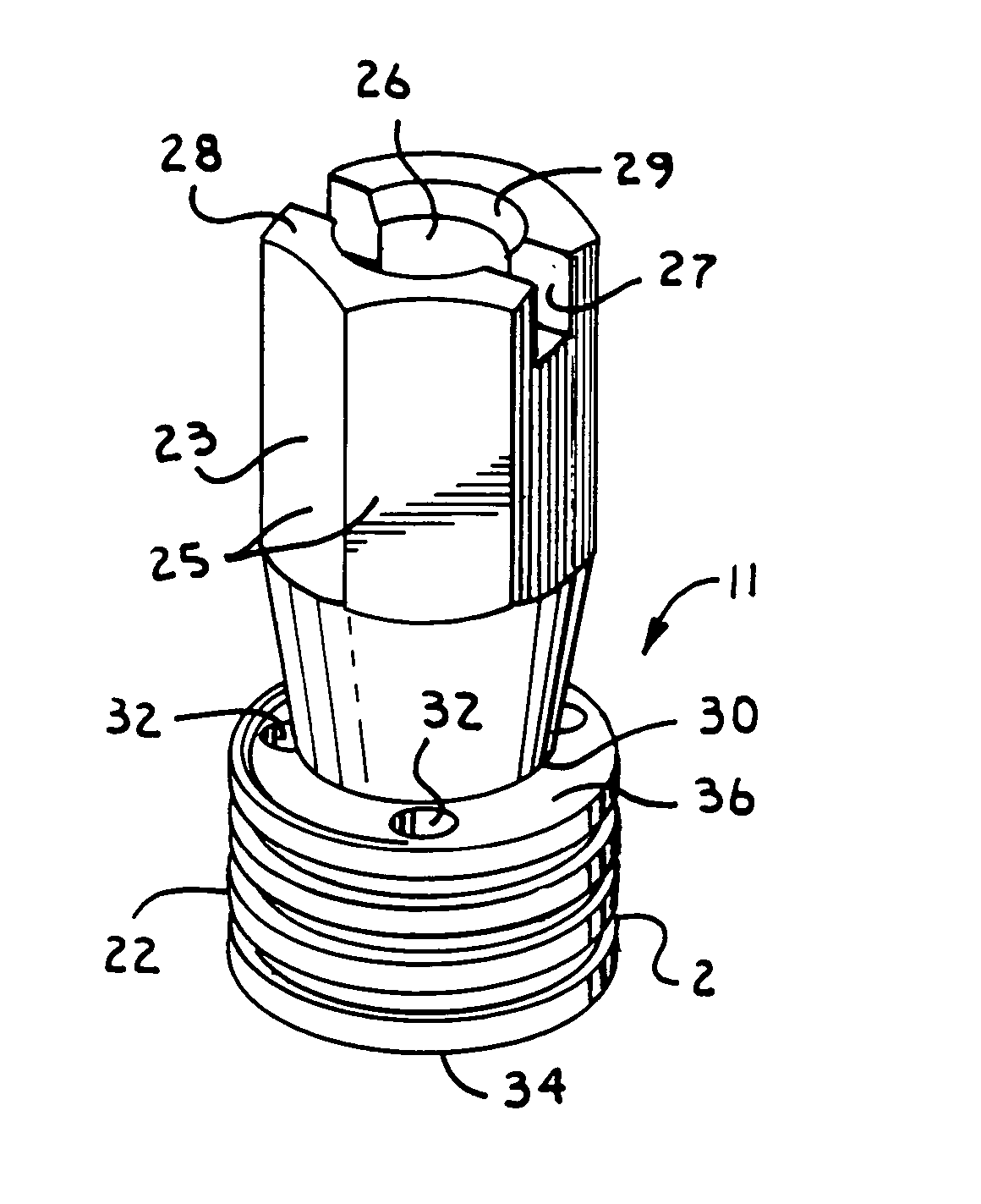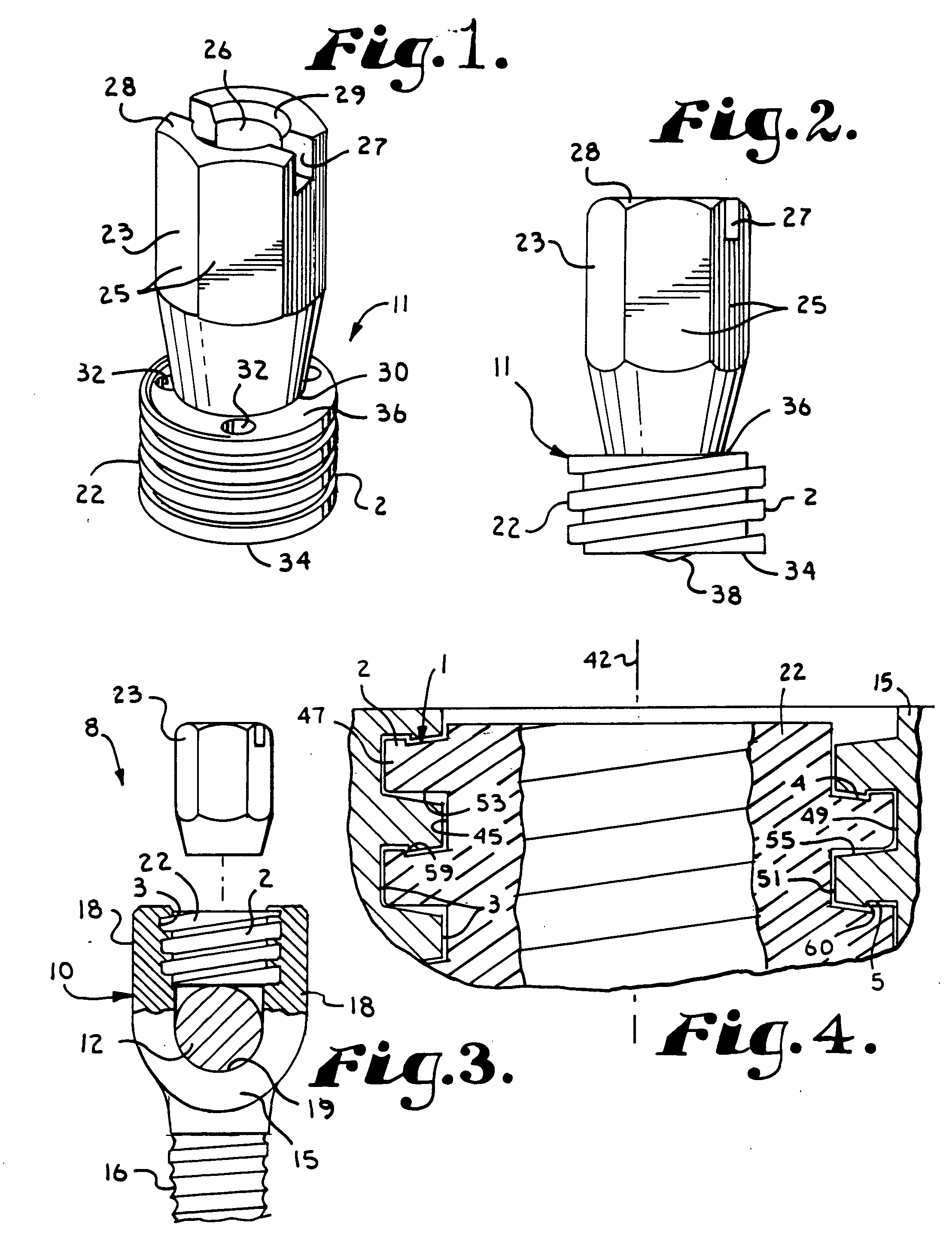Helical interlocking mating guide and advancement structure
a technology of interlocking mating and guide, which is applied in the direction of prosthesis, ligaments, osteosynthesis devices, etc., can solve the problems of implant design, implant failure, and surgeons installing implants, and achieve the effects of reducing the likelihood of implant and closure system failure during use, high torque, and relatively economic formation
- Summary
- Abstract
- Description
- Claims
- Application Information
AI Technical Summary
Benefits of technology
Problems solved by technology
Method used
Image
Examples
Embodiment Construction
[0056] As required, detailed embodiments of the present invention are disclosed herein; however, it is to be understood that the disclosed embodiments are merely exemplary of the invention, which may be embodied in various forms. Therefore, specific structural and functional details disclosed herein are not to be interpreted as limiting, but merely as a basis for the claims and as a representative basis for teaching one skilled in the art to variously employ the present invention in virtually any appropriately detailed structure.
[0057] Referring to the drawings in more detail, the reference numeral 1 generally designates a gripping interlocking form arrangement incorporating a non-linear or compound surface which embodies the present invention. The interlocking form arrangement 1 includes an external interlocking form 2 and internal interlocking form 3 which have respective thrust surfaces 4 and 5 (FIG. 4) and which are used as pairs. The interlocking form arrangement 1 may be used...
PUM
 Login to View More
Login to View More Abstract
Description
Claims
Application Information
 Login to View More
Login to View More - R&D
- Intellectual Property
- Life Sciences
- Materials
- Tech Scout
- Unparalleled Data Quality
- Higher Quality Content
- 60% Fewer Hallucinations
Browse by: Latest US Patents, China's latest patents, Technical Efficacy Thesaurus, Application Domain, Technology Topic, Popular Technical Reports.
© 2025 PatSnap. All rights reserved.Legal|Privacy policy|Modern Slavery Act Transparency Statement|Sitemap|About US| Contact US: help@patsnap.com



